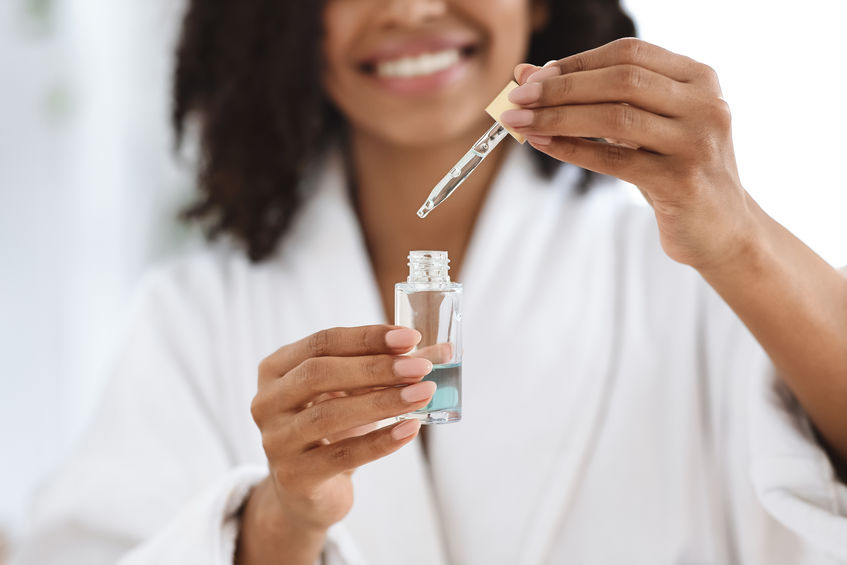When it comes to your beauty regime, how clued up are you when it comes to using the right skincare acids for your skin?

Not so long ago, along with skin specialists, only the most dedicated skin care beauty aficionados knew about the importance of incorporating skincare acids into daily beauty regimes. Today, skincare acids are becoming increasingly popular, dubbed as miracle tools to help fight acne, wrinkles, scarring, uneven skin tone and more.
While we may want to experiment to seek the best skincare acids for us, the complex names and huge range of products out there can make it difficult to know where to start when implementing them into our skincare regimes.
To talk us through the most commonly found acids and to help us make the right choice for our skin type, we recently caught up with Dr Ifeoma Ejikeme, Medical Director at aesthetic and medical clinic, Adonia Medical Clinic, winners of Best Clinic London at the Aesthetic Awards 2019.
Salicylic Acid
For oily and acne-prone skin – it is made from the same family as aspirin. It exfoliates and reduces excess oil in the skin, helping to reduce acne breakouts. Look for products with 2% strength and add to your evening skin regime when cleansing.
Lactic Acid
For dry skin and rosacea – coming from cow’s milk, lactic acid is unusual in that it exfoliates but also hydrates the skin, by pulling water into the skin.
Glycolic Acid
For all skin types – coming from sugar cane, it is a really small molecule that penetrates into the skin, exfoliating and brightening the skin. It is strong, so only use once a week as an exfoliator on the face with a product at 10% strength. It should also not be used long term, so take a break after a couple of months.
Mandelic Acid
Great for darker skin – While Glycolic acid is great for skin types 1-3 Mandelic acid is better for darker skin yet is often overlooked. Made from almonds, the modules are larger which makes it good for brightening darker skin types without causing pigmentation.
Hyaluronic Acid
Not an acid – this is not an active acid like the others above. It is a molecule found naturally in the skin and most abundant in the skin. It acts like a sponge – holding a thousand times itself in water – making it a great product to add into your skincare regime after cleansing and before putting on your moisturiser or other daily serums.

Now, you’re all caught up with the most common skincare acids, Dr Ejikeme offers a word of caution when it comes to skin peels. She said: “It’s important to get expert advice. With clinic’s currently closed, there has been an increase in consumers buying at-home skin peels that all contain different amounts of the acids mentioned above. Before applying these peels, it is best to seek medical advice from a skin specialist to ensure you are using the right peels for your skin type.”
That sounds like sound advice to us.












